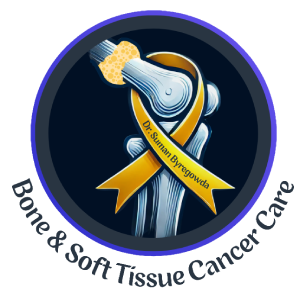

You should consult an orthopedic oncologist for Chondroblastoma because this type of tumor affects the bone and is often best treated by specialists in bone tumors. Orthopedic oncologists are experts in diagnosing and treating bone tumors, including chondroblastoma, and they can offer the best options for treatment, including surgery and advanced therapies. Consulting an expert ensures proper management and minimizes complications, such as the risk of recurrence or affecting surrounding structures.
Chondroblastoma is a rare, benign (non-cancerous) bone tumor that originates from cartilage cells (chondroblasts). It typically forms in the epiphysis (end part) of long bones, particularly near joints. While it is benign, it can cause significant pain, swelling, and may weaken the bone, making it more prone to fractures. Although it does not spread to other parts of the body (metastasize), it can grow locally and cause damage to surrounding tissue.
Chondroblastoma most commonly affects young individuals between the ages of 10 and 30 years. It is rare in older adults and children under 10 years old.
The bones most commonly affected by Chondroblastoma are:
The exact cause of Chondroblastoma is not fully understood. It is believed to occur due to abnormal growth of cartilage cells (chondroblasts) in the bone.
Diagnosing Chondroblastoma typically involves the following:
The primary treatment for Chondroblastoma is surgical removal of the tumor. The
treatment options include:
One of the newer treatment approaches for Chondroblastoma is minimally invasive
surgery with the use of techniques like radiofrequency ablation (RFA). In this procedure a
needle is introduced into the tumor under CT scan guidance and tumor is burnt with
temperature of 90-95 degrees. It’s a day care procedure, does not require cutting of the body.